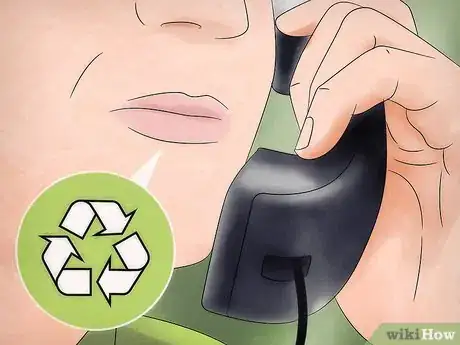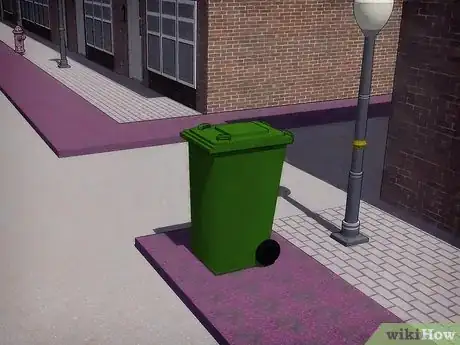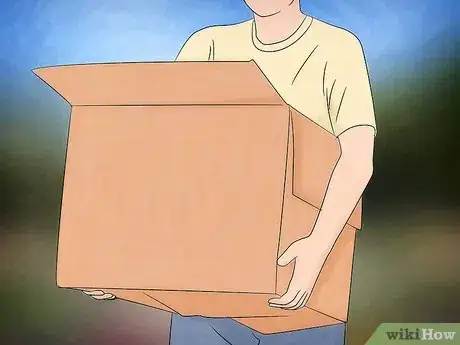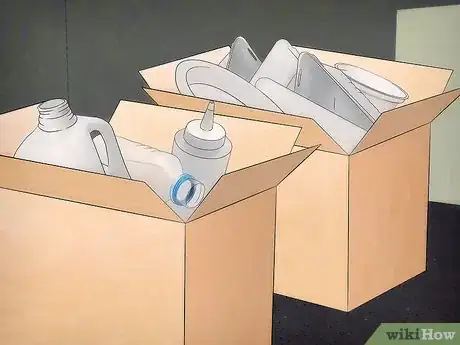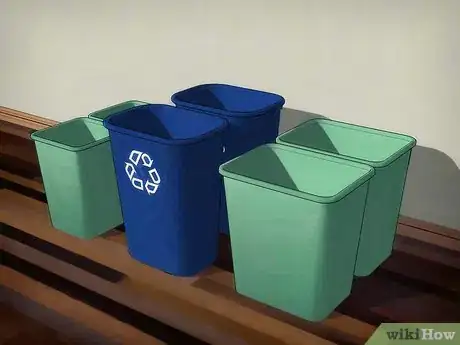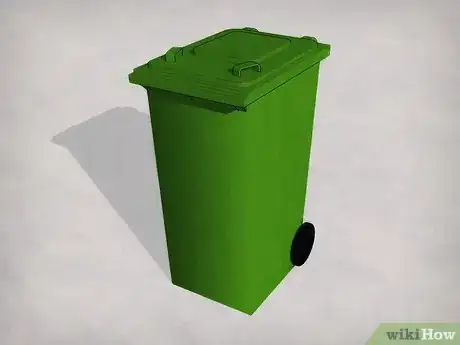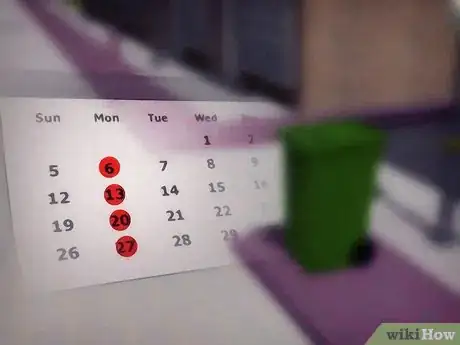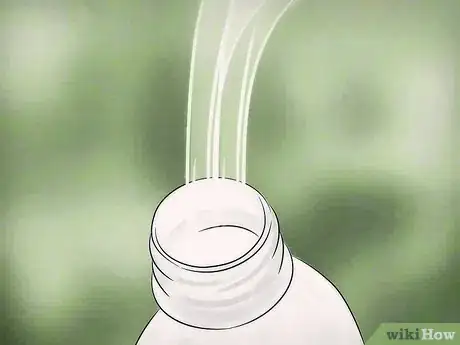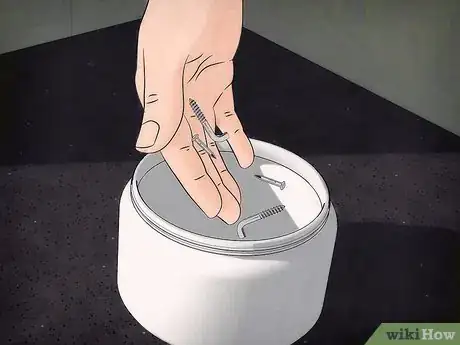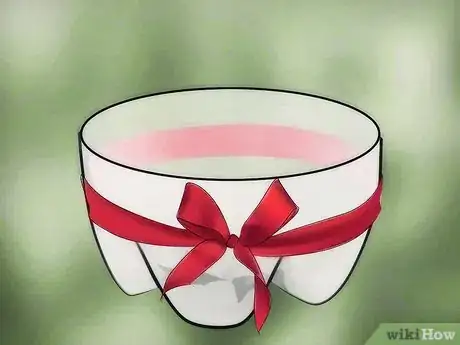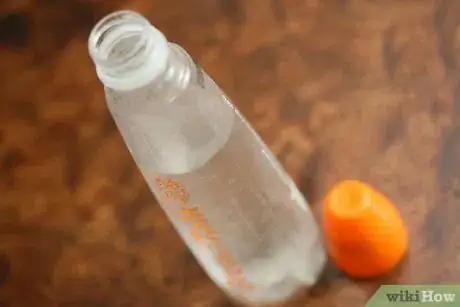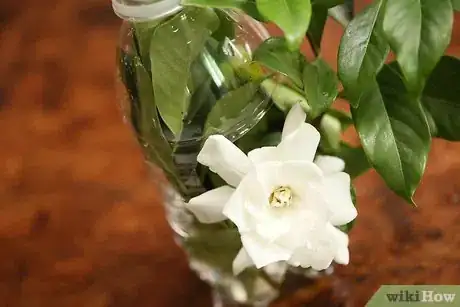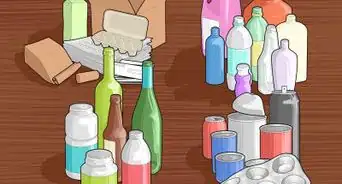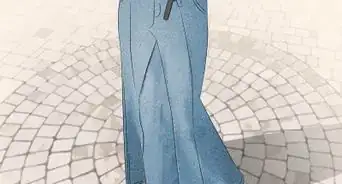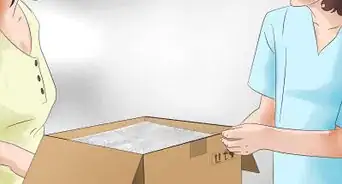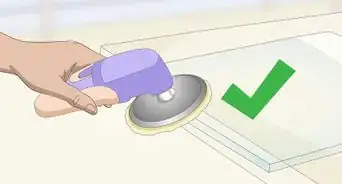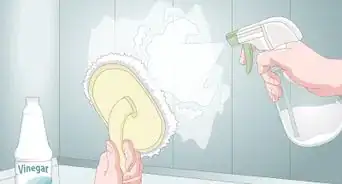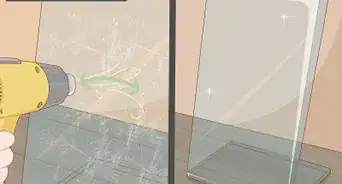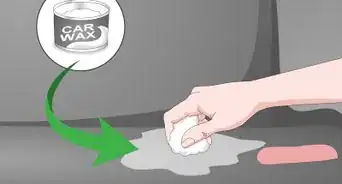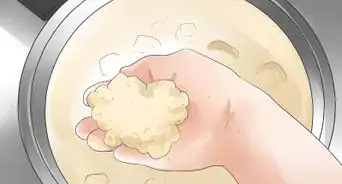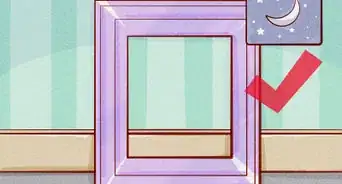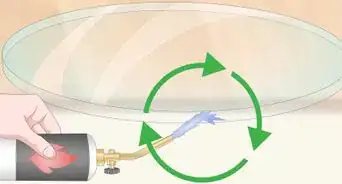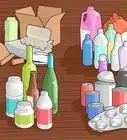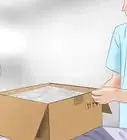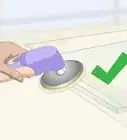This article was co-authored by Kathryn Kellogg. Kathryn Kellogg is the founder of goingzerowaste.com, a lifestyle website dedicated to breaking eco-friendly living down into a simple step-by-step process with lots of positivity and love. She's the author of 101 Ways to Go Zero Waste and spokesperson for plastic-free living for National Geographic.
There are 11 references cited in this article, which can be found at the bottom of the page.
This article has been viewed 104,809 times.
Plastic containers make up a huge amount of the trash the average person throws away each day. Fortunately, recycling can keep those plastics out of landfills and reduce the number of new materials spent on a variety of objects. By encouraging people in your home or office to recycle, taking your plastic to the proper recycling centers, or just reusing your old plastic bottles, you can easily recycle plastic and help keep these materials out of landfills.
Steps
Disposing of Plastic Properly
-
1Sort and prepare plastics according to instructions provided by your recycling service provider, which maybe by size, shape or type.[1]
- Check the bottom of your container for type code, if required by your service provider. Plastic is divided into 7 “types,” conveniently numbered 1-7. You can find this number on the bottom of whatever plastic container you’re using. Follow the instructions provided by your recycling service provider.[2]
-
2Clean and prepare containers according to your recycling providers instructions. Some service providers ask the lids to be removed.[3] Recycling centers can technically clean and sterilize the plastic you bring them, but because this is an intensive process, they’ll sometimes just throw out old food containers instead of recycling them. Rinse out the insides of old food containers and get rid of all the food waste to make it easier for the center to actually recycle your plastic.[4]
- If you are disposing of old makeup, you should wipe out whatever is left and then recycle it.
- Use hot water and a scrubber to get as much of the food waste off of your plastic as you can. For plastic bottles, fill them with slightly soap water, then swish the water around to clean out the interior. Do be mindful of water usage and energy use associated with heating the water.
- For recyclable materials that can’t be easily rinsed, such as takeout containers, your best bet is to separate the dirty parts from the clean ones and throw the dirty parts in the trash.
Advertisement -
3Find out about the specifics of your community’s recycling program. Many cities and towns now have recycling drop-off points or even curbside municipal recycling collection. However, every community is different, so visit your local government’s website to find out what facilities and options are available in your area.[5]
- Most communities will at least have 1 or more recycling facilities, although these facilities may only accept certain types of plastic.
-
4Leave your recycling at a drop-off point to have someone pick it up. If your community offers curbside pickup, you can leave your plastics in a recycling bin alongside your garbage bin on garbage day. In areas that don't have curbside pickup, there are often large recycling dumpsters around town, usually at public places like schools, churches, or municipal buildings.[6]
- Make sure you’re adhering to your local government’s guidelines when dropping off your recyclables. Otherwise, this may constitute littering.
-
5Take your plastics to a local recycling center if there’s no pickup option. Search online or call your local officials to find recycling centers in your area. Be sure to ask if there are any limits on what types of plastic you can bring to the center to be recycled.[7]
- For example, some recycling centers may not be able to accept plastic bags. However, you can often take these to the grocery store to be recycled.
- Some recycling facilities will pay a couple of cents per item that you drop off. You can make a few extra bucks by collecting recycling from your friends and neighbors and bringing it in.
-
6Contact the recycling facility and ask if you need to sort your plastic. Some recycling centers will do the sorting and cleaning for you, so you can just dump cans, plastics and papers all together. With others, you will need to separate different materials beforehand and drop them off into select containers when you take them to the facility.[8]
- If your facility requires it, separate paper and cardboard, plastics, glass, and cans. This can be annoying, but like any household chore, it gets easier if you make a weekly habit of it.
- Note that you may be required to clean out your plastic and remove the labels as well.
Encouraging Recycling in Your Home or Office
-
1Put recycling baskets in every room that also has a trash can. For best results, get blue baskets that are clearly distinguishable from trash cans. Place them near the regular trash cans so people won’t be tempted to just throw plastic in the trash out of laziness.[9]
- Make sure you put these baskets in every room where plastic is used, including the kitchen or break room, bathrooms, and rooms where people tend to congregate.
- If you have to sort your recyclables, you can save time by getting multiple or sectioned bins so you can sort as you throw each item away.
-
2Order a recyclables bin for curbside pickup for your home. In some communities you can set your recycling out in a bin just like your trash. If your community offers this type of program, be sure to sign up for it and order the right kind of bin for your plastics.[10]
- If you’re not sure if your community has this type of program, visit your city government’s website and look for residential recycling among other residential services.
- Sometimes, like garbage collection, this will require a one-time or annual fee, but it makes recycling so easy the expense is usually worth it.
- If you live in an apartment, you may have building recycling bins already.
-
3Take out your recycling once a week to keep them from piling up. Staying on top of your recyclables this way will help prevent the task of actually recycling them from becoming too intimidating. If your nearest recycling center is a little far away, take out your recycling once or twice every month instead and just store your old plastic in the meantime.[11]
Reusing Old Plastic
-
1Refill fluid containers once they run out to avoid throwing them out. If the bottle was used to hold soap, detergent, or some other cleaning liquid, it can easily be refilled from a larger bulk-sized container of that liquid. However, bacteria can easily build up in a reused bottle, so you should only use old bottles to store non-consumables.[12]
- For example, be careful about drinking repeatedly from the same plastic bottle. Only reuse drinking bottles once or twice before tossing them out.
-
2Organize your knick-knacks in your empty pill bottles. From coins to loose screws to craft supplies, these small, hard plastic bottles are perfect for keeping track of all kinds of tiny objects. Just make sure you remove the labels if they have personal information on them![13]
-
3Use your old plastic bottles to make craft projects. From candy dishes to elegant vases, there are lots of artsy ways you can re-purpose your empty soda bottles and thereby reduce plastic waste. Make sure you rinse out the bottles with soap and warm water first![14]
-
4Reuse grocery bags. Rather than wasting a bag that could be put to use, use it for the groceries.
-
5Fill your bottles with water and put some plants in it. Your house can always use some extra decorations.
Expert Q&A
Did you know you can get premium answers for this article?
Unlock premium answers by supporting wikiHow
-
QuestionWhich types of plastic are recyclable?
 Kathryn KelloggKathryn Kellogg is the founder of goingzerowaste.com, a lifestyle website dedicated to breaking eco-friendly living down into a simple step-by-step process with lots of positivity and love. She's the author of 101 Ways to Go Zero Waste and spokesperson for plastic-free living for National Geographic.
Kathryn KelloggKathryn Kellogg is the founder of goingzerowaste.com, a lifestyle website dedicated to breaking eco-friendly living down into a simple step-by-step process with lots of positivity and love. She's the author of 101 Ways to Go Zero Waste and spokesperson for plastic-free living for National Geographic.
Sustainability Specialist
-
QuestionHow old is plastic?
 wikiHow Staff EditorThis answer was written by one of our trained team of researchers who validated it for accuracy and comprehensiveness.
wikiHow Staff EditorThis answer was written by one of our trained team of researchers who validated it for accuracy and comprehensiveness.
Staff Answer wikiHow Staff EditorStaff AnswerAlthough not termed plastic and not fully synthetic, plastic was first invented by Alexander Parkes in 1856. Because he invented it, it was originally called Parkesine, which later went on to be called celluloid. The first fully synthetic version of plastic was invented by Leo Baekeland in 1907 and it was called bakelite, now a highly collectable form of plastic. Leo also came up with the word "plastics."
wikiHow Staff EditorStaff AnswerAlthough not termed plastic and not fully synthetic, plastic was first invented by Alexander Parkes in 1856. Because he invented it, it was originally called Parkesine, which later went on to be called celluloid. The first fully synthetic version of plastic was invented by Leo Baekeland in 1907 and it was called bakelite, now a highly collectable form of plastic. Leo also came up with the word "plastics." -
QuestionWhat is the most common form of plastic?
 wikiHow Staff EditorThis answer was written by one of our trained team of researchers who validated it for accuracy and comprehensiveness.
wikiHow Staff EditorThis answer was written by one of our trained team of researchers who validated it for accuracy and comprehensiveness.
Staff Answer wikiHow Staff EditorStaff AnswerThe most common plastic is polyethylene terephthalate, which is more commonly known as PET. It has a hard form (for making containers, bottles, etc.) and a soft form (which can be turned into clothes). Polyvinyl choride (PVC) is another common form of plastic. Like PET, it has both hard and soft forms, with the hard form used for such things as credit or room cards, pipes and framework, and the soft kind often used for shoes, bags and pleather products. And likely you're also familiar with polystyrene and polypropylene, two other common forms of plastic.
wikiHow Staff EditorStaff AnswerThe most common plastic is polyethylene terephthalate, which is more commonly known as PET. It has a hard form (for making containers, bottles, etc.) and a soft form (which can be turned into clothes). Polyvinyl choride (PVC) is another common form of plastic. Like PET, it has both hard and soft forms, with the hard form used for such things as credit or room cards, pipes and framework, and the soft kind often used for shoes, bags and pleather products. And likely you're also familiar with polystyrene and polypropylene, two other common forms of plastic.
References
- ↑ https://www.oregonmetro.gov/tools-living/garbage-and-recycling/recycling-home/plastic-recycling
- ↑ https://www.huffpost.com/entry/how-to-recycle-basics_n_578d7e8ce4b0c53d5cfab03d
- ↑ https://www.oregonmetro.gov/tools-living/garbage-and-recycling/garbage-recycling-hazardous-waste-disposal-portland
- ↑ https://www.businessinsider.com/are-take-out-containers-trash-recycling-2016-2
- ↑ Kathryn Kellogg. Eco-friendly Living Expert. Expert Interview. 28 June 2019.
- ↑ https://berecycled.org/how-to-recycle/bottle/
- ↑ https://earth911.com/recycling-guide/how-to-recycle-plastic-jugs-bottles/
- ↑ https://www.recyclenow.com/recycle-plastic-fantastic
- ↑ https://www.realsimple.com/home-organizing/green-living/how-set-up-recyling-system
- ↑ https://www.recyclenow.com/recycle-plastic-fantastic
- ↑ https://www.plasticsmakeitpossible.com/plastics-recycling/how-to-recycle/recycle-more-plastics-these-tips-help-make-it-easy/
- ↑ https://www.plasticsmakeitpossible.com/plastics-at-home/the-ultimate-guide-to-recycling-reusing-and-repurposing-plastic-items/
- ↑ https://www.plasticsmakeitpossible.com/plastics-at-home/the-ultimate-guide-to-recycling-reusing-and-repurposing-plastic-items/
- ↑ https://www.plasticsmakeitpossible.com/plastics-at-home/the-ultimate-guide-to-recycling-reusing-and-repurposing-plastic-items/
About This Article
Before you try to recycle plastic, look at the bottom of the container to see if it can be recycled. It should be labeled with a number 1 through 7. Number 1 and 2 plastic can always be recycled. Number 4 and 5 plastic can usually be recycled, but not always, so you'll want to contact your local recycling center if you're not sure. Unfortunately, number 3, 6, and 7 plastic can't be recycled. These types of plastics are usually found in things like plastic wrap, cooking oil containers, and styrofoam. If you don't want to throw away plastics that you can't recycle, try reusing them at home, like for storage or craft projects. To learn how to sort plastics for recycling, scroll down!
